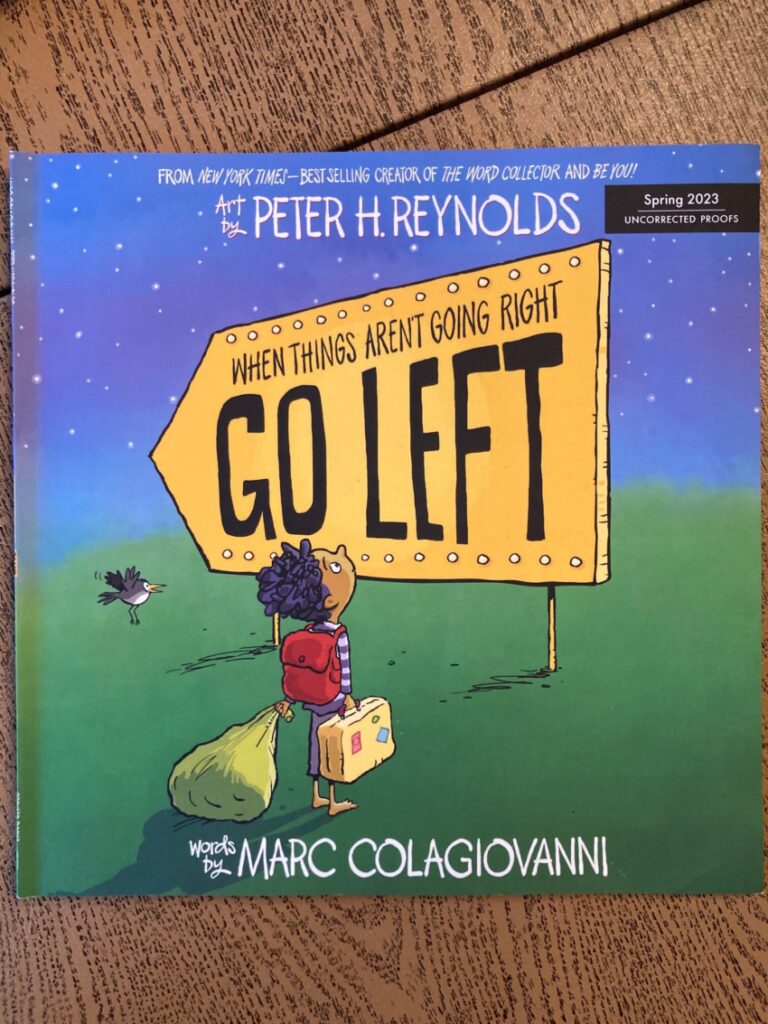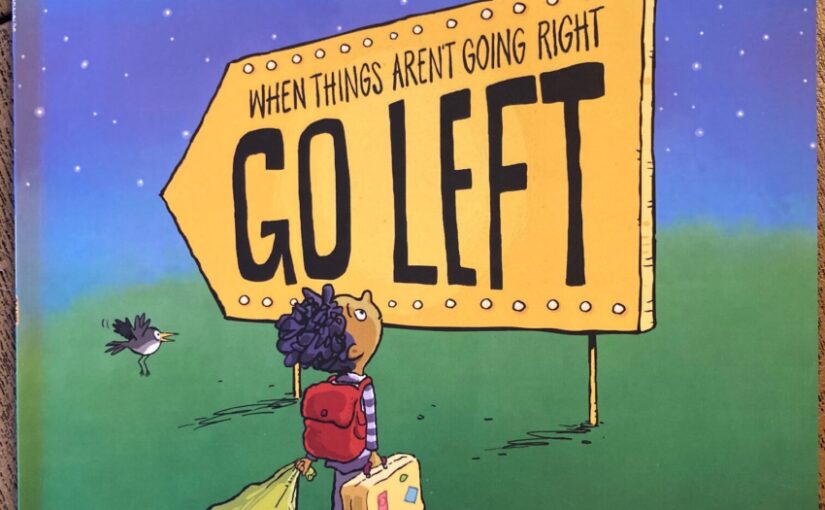If you’re looking for a sign, this is it. I use that sometimes when I teach. I’ll write “Sign” on the board, and put a border around it, then stake it as if it’s posted in the ground. When Things Aren’t Going Right, Go Left is an illustrated book that is rife with metaphors, double-meaning words and positive vibes. It’s an unlikely book that’s an empowering take on how young school-aged children can overcome anything just by thinking in a more positive manner. The book also tackles an angle that elementary students aren’t told enough, and that’s the fact that everybody has something. And that you and your something are OK if you put it down for a bit and give it a rest.

Go Left is an approachable tale that any kid in elementary school can identify with. It teaches a lesson, but it doesn’t scream that fact to them in advance. It also doesn’t solve the problem, or the lesson, in a way that is unrealistic. It does use visual metaphors-and lots of them, but they’re ones that every kid will understand at some level.
Walk down any elementary school hallway and you’ll see a sign that says something like ‘it’s OK to have a bad day’. Those ages might also have trouble knowing when something is a big deal. They’re also growing and their minds are still developing, with some happening quicker than others. What Go Left does in a very genuine and sincere manner is that it warms itself up to young readers on several levels.
One level is the color of the pages that’ll infer that feeling. When the titular character is deep in the midst of his worries the pages are muddier, darker, and more chaotic. As he solves his issues the colors become one and are more peaceful. He’s also carrying some bags and inside of them are his worries, doubts, and frustrations. They’re represented by cartoon creatures who are always questioning their abilities or planting seeds of failure.
People, regardless of their age have these things. It’s just that when you’re in elementary school you’re not sure what they’re called; how to deal with them and if they’re normal. In real life, your concerns aren’t cartoon creatures and you can’t always deal with them in exactly the same way, but the process of starting to leave them behind are identical for all ages.
In Go Left, the boy leaves behind his worries in a literal sense. He just drops the suitcase and walks away. Of course, his worries open the suitcase and tell him that he’s making a mistake. Once the boy conquers the fear he walks past the suitcase and the worries are still there, they’re just not as noisy. They’re not commanding his attention or changing his progress, so he picks them up again.
This is important because it lets kids know that worries or doubts will always be there. They might morph into something different or downsize, but they’ll be there. Go Left ends on an empowering note that reminds kids that it’s OK to put our worries down for a bit when they get too heavy. This feels like a kindred book spirit to one that could be in the A Big Bright Feelings series by Tom Percival.
However, that series has a bigger format and more of a linear story. The main plot device in Go Left is a boy who is scared of jumping from the high diving board. You could easily use that as a metaphor for anything that’s challenging, new or one that you’re nervous about doing. This is it. It’s the sign that you’re looking for. Except in Go Left, it’s played for laughs as young audiences will giggle at the absurdity of baby birds used to illustrate things that worry or concern you. It’s the way that kids learn lessons best, which is through grinning and smiling, all the while hopefully remembering the moral.
When Things Aren’t Going Right Go Left is by Marc Colagiovanni with art by Peter H. Reynolds and is available on Orchard Books, an imprint of Scholastic Books.
There are affiliate links in this post









 Facebook
Facebook Twitter
Twitter Flickr
Flickr GooglePlus
GooglePlus Youtube
Youtube